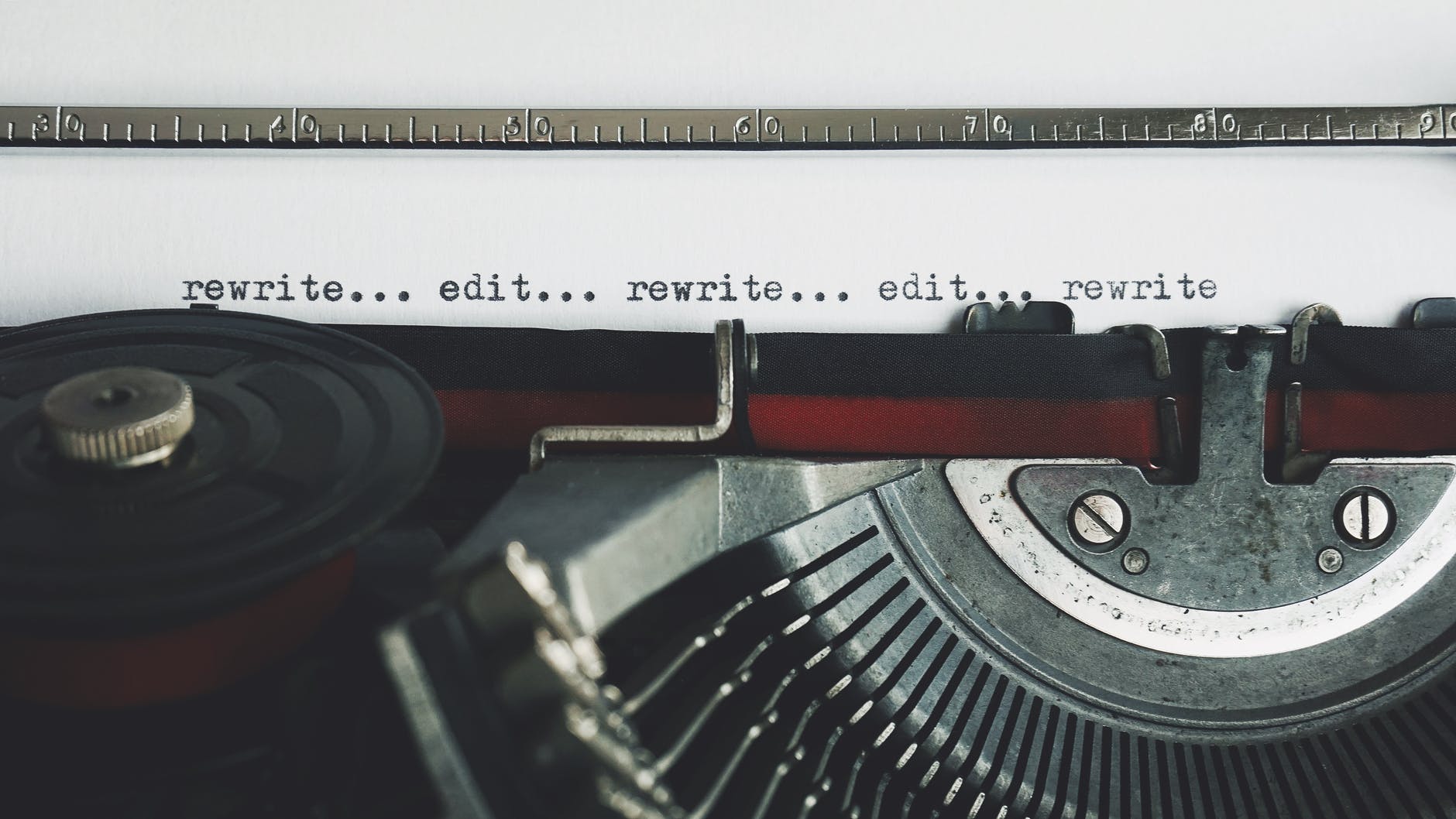
Everything You Need to Know About Writing Style Guides
EVERYTHING YOU NEED TO KNOW ABOUT WRITING STYLE GUIDES
Jonathan Culver, an author renowned for challenging the foundations of the English language, once stated, “The English language is a work in progress. Have fun with it.”
Indeed, the English language is a magnificent living organism. And unlike other languages, there is no “right” way of using it. Quite the contrary, English can lend itself to specific purposes and transform itself to suit the needs of its users.
That being said, while there is no “correct” way of speaking or writing English, it is essential to adopt a standard style when producing content. After all, defining a particular writing style is crucial to maintaining a consistent level of quality in the content you’re producing.
In this article we will explore the various style guides content producers can use to adapt English according to their purposes.
How to Pick a Style Guide for your Writing

Often, writers and content producers ask themselves, “What is the best writing style?” The answer to that question largely depends on the type of content and target audience. As such, it is worth looking into both elements.
The type of content defines the writing style. Writers often mistake this process by allowing the writing style to define content. For example, academic papers must use a formal writing style. In this situation, a different type of writing style would cause the paper to lose credibility.
Additionally, the target audience defines the type of written discourse. A highly technical topic intended for a general audience must have a digestible writing style. Therefore, content producers must strive to make complex material user-friendly.
Once the target audience and type of content are clear, there are three additional factors to consider. These factors encompass the content creator’s specific characteristics. Therefore, these elements must reflect the intended writing style.
- House style. When working with publishing houses, they may have specific style guides. Moreover, private corporations may have a particular style guide they follow. Therefore, these guidelines should determine the text’s writing style.
- Medium. The medium of publication is highly important. For instance, academic journals may require a specific writing style. In contrast, mainstream media outlets may espouse a journalistic style. Also, fiction publishers may have specific conventions that writers must follow.
- Niche. There are times when material corresponds to a particular niche. In such cases, a distinctive writing style would be necessary. This concept is especially true for fiction content. Nonfiction content may also need to follow specific guidelines based on the type of content. For instance, a how-to guide may need simple language, while a marketing manual might employ a more conversational tone.
In addition, writers and content producers should avoid the following key mistakes.
- Attempting to sound “smart.” A common mistake lies in attempting to impress the audience. This strategy may backfire, particularly if the target audience is a general one. Attempting to sound smart implies using highly sophisticated language that clouds the text’s message. As a result, sounding smart may result in giving the wrong impression.
- Making mistakes in style. Beyond spelling and grammar, style mistakes entail tone, style, and voice. For example, writing in the first-person singular (“I” statements) may seem too informal for a serious publication. In contrast, an impersonal, third-person narrative may seem distant to a general audience.
- Neglecting a consistent style. Maintaining a consistent style provides uniformity to a text. It also reflects a high degree of professionalism. For instance, mixing the active and passive voices may give off the wrong impression. Consequently, writers should avoid the passive voice as much as possible.
Renowned novelist Stephen King once said, “Good writing is often about letting go of fear and affectation.” Certainly, adopting a writing style will help avoid the self-consciousness that comes with writing. Maintaining a coherent writing style is the ultimate confidence booster.
So, here are the top four writing style guides successful writers and organizations use to drive home their message, straight to their target audience.
Top Four Writing Style Guides
Associated Press Stylebook
The Associated Press (AP) Stylebook is a collection of writing guidelines intended primarily for news media. As such, it contains a clear journalistic tone.
Usage of the AP style is predominant in newspapers, online news media, and blogs. Additionally, content marketers tend to use the AP style when seeking a more natural tone.

The news media has adopted the AP style as the de-facto style. Its guidelines on grammar, spelling, and punctuation attempt to capture mainstream cultural references.
For instance, the AP Stylebook recommends the usage of gender-neutral pronouns. Moreover, this style utilizes American English conventions.
Many European publications also use the AP style when publishing content for American audiences.
The AP style is useful when producing content for general audiences. This style focuses mainly on economic writing. Consequently, long and elaborate sentences are deemed superfluous.
Ideally, writers using the AP style should be as clear and concise as possible. Over-embellishment is not advisable within the AP style. Furthermore, standard terms are preferable over complex and obscure words.
Content marketers, bloggers, and nonfiction writers all find the AP style appealing. In particular, it facilitates communicating information to a broad audience. Therefore, the AP style is not advisable for a niche publication or academic journals.
The AP Stylebook goes through frequent revisions, every other year at the end of May. Its most recent updates took place in 2020. The official guide goes by the name “The Associated Press Stylebook.” Plus, the AP Stylebook Online contains a solid overview of style and form. AP editors gather to review the Stylebook at the annual conference of ACES: The Society for Editing.
Chicago Manual of Style
The Chicago Manual of Style (CMOS) is a staple of English-language writing. From journalistic to academic writing, the CMOS is a standard in the world of literature. The CMOS first saw publication in 1906. And in 2006, it went online for the first time.
The CMOS contains a set of guidelines on appropriate writing. It focuses on nonfiction writing. As such, it is most common in commercial texts (manuals, guides, and whitepapers) and academic writing.
Colleges frequently ask their students to use CMOS style while writing their papers. In fact, in the academic realm, the CMOS is the predominant citation style. Additionally, it is not uncommon to see text with the AP writing style use CMOS citation styles.
Linguistically, the CMOS uses American English as its base and offers its recommendations for grammar, spelling, and punctuation.
The most distinctive aspect of the CMOS is its manuscript formatting guidelines. For instance, the CMOS recommends the use of the Times New Roman font, 12 pt. Also, the text should contain double line spacing with a left-justified alignment. Moreover, the page should contain one-inch margins all around.
Writers and content producers looking to publish formal, scientific, or academic works should employ the CMOS. Specifically, the humanities make extensive use of the CMOS guidelines. Nevertheless, long-form blog posts and non-journalistic articles commonly utilize the CMOS.
The CMOS’s last revision took place in 2017. It is available online as the Chicago Manual of Style Online and its companion Chicago Style Q&A. This manual is a handy quick-reference guide.
American Psychological Association
The American Psychological Association’s (APA) style guide has become a go-to writing reference guide in recent years.
The APA guidelines first emerged in 1929. Its initial authors came from psychology, anthropology, and business backgrounds.
The first edition of the full manual reached publication in 1952. Since 2009, the APA Style Blog constitutes an online reference guide.
The APA style guide is the standard for scientific writing.

On the whole, the APA manual’s purpose is to simplify academic writing. As such, its core lies in document formatting and citations. Citations vary considerably from the CMOS, as citations are in-text, instead of being listed as traditional footnotes.
Standard American English conventions are the basis for the APA style guide. Additionally, grammar, punctuation, and spelling follow generally accepted guidelines. For example, the APA format allows the passive voice, unlike the AP Style. However, writers should be wary of overusing it.
Overall, academia appears to prefer the APA style. More and more colleges, journals, and even high schools encourage writers to use the APA style.
It is worth noting, however, that the APA writing style is not as common in commercial, marketing, or informational materials. Moreover, the medical profession favors the Vancouver citation style which uses numbers within the text that refer to numbered entries in the reference list . Consequently, the APA style is more common in humanities, social sciences, and some natural sciences.
The APA guide does not undergo frequent revisions. A new guide reaches publication roughly every 10 years. The latest guide has been available since 2019.
Modern Language Association of America
The Modern Language Associate of America’s (MLA) writing guide has been a stalwart in the academic world for decades. While not the oldest, the MLS guide quickly caught on within academic circles.
The MLA’s first publication was released in 1951 as the “MLA Style Sheet.” Then, the MLA Handbook first saw publication in 1977 and has been available online since 2009.
Initially, the MLA Handbook intended to serve academic writers and college-level students. However, it now caters to writers of all areas since 2016.
The MLA style guide primarily focuses on citation and paper formatting. So, the bulk of its recommendations center on manuscript creation more than writing mechanics. As such, grammar, spelling, and punctuation all follow general American English conventions.
For example, the MLA style calls for 8 ½” by 11” paper, one-inch margins on all sides, and the first word of every paragraph with a half-inch indentation. Also, the font size should be 12 pt. There are no specific recommendations on the font type.
On the whole, easily legible fonts are preferable. The most common font types are Times New Roman and Arial. Additionally, academic papers should have double-spaced lines.
As for citations, the MLA style uses footnotes. Endnotes are also prudent, though this decision largely comes down to individual preferences. Publications such as journals and magazines may have specific guidance on citation location.
In general, the MLA style is predominant in the humanities within the language field. Some social sciences may use the MLA style over the APA. However, these decisions depend on individual schools and faculty members. On the whole, most schools prefer the MLA over APA.
The last MLA updates hit widespread publication in 2016. There are revised print editions every three to five years. In addition, there is an Online MLA guide available that provides key insights into formatting and citation.
Conclusion
Implementing and sticking with a specific writing style is a must for content production. Adopting a writing style helps portray professionalism, stemming from the consistency in written materials and promotional items.
Therefore, it is crucial to choose a writing style that falls in line with the target audience and publication medium. Most importantly, a writing style should reflect the spirit of the content presented.
Most brands opt for the AP writing style, particularly if they publish across various platforms. Nevertheless, the MLA or APA styles work well when publishing white papers or research materials.
As for writing conventions, the CMOS provides appropriate guidance on spelling, grammar, and punctuation, especially in conjunction with the MLA format.
Overall, style decisions boil down to ensuring that the right message reaches the right audience across the proper platforms.
Related Content
- 0 Comment
Subscribe to Newsletter
- How Can SharePoint Be Used To Organize and Disseminate SOPs?
- Planning the Perfect Genealogy Research Trip: A Step-by-Step Guide
- From Silly to Awesome: How Words Change Meaning Over Time
- The Psychology of Font Choice: How Typography Impacts Content Engagement
- How to Distribute SOPs for Maximum Usability


